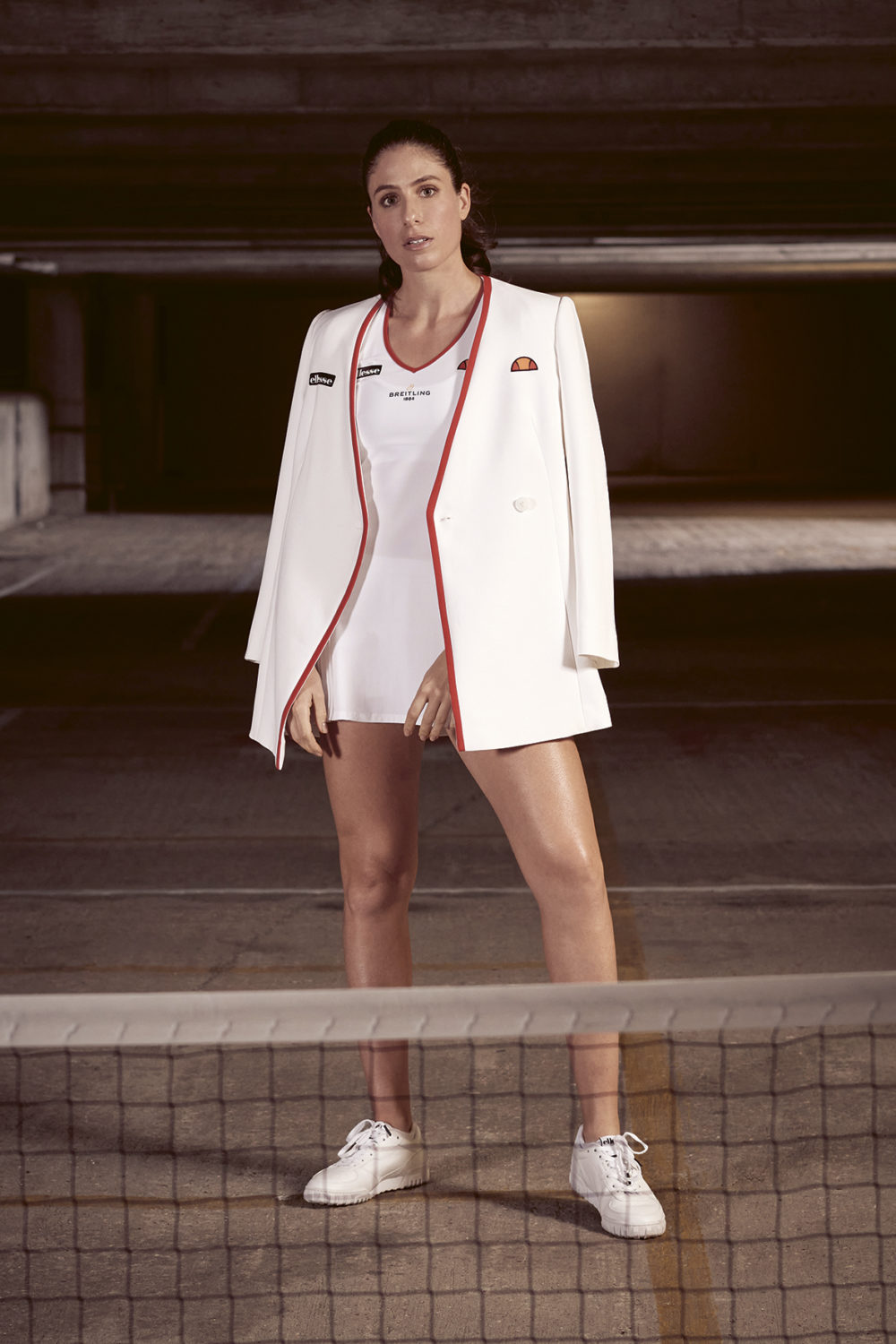ellesse
A Style Icon Stands the Test of Time
By Chris Oddo
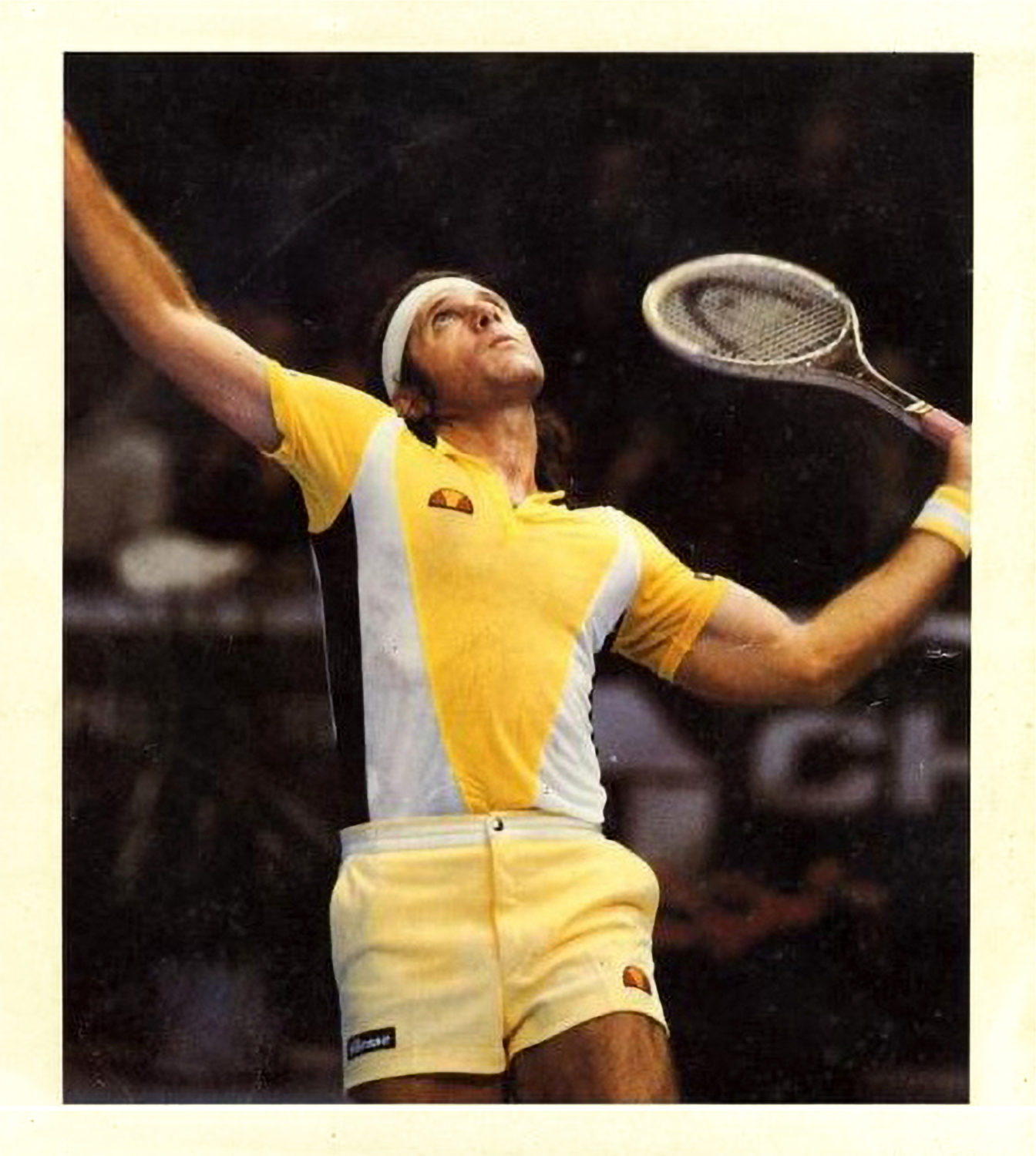
Once a key influencer of tennis’ colourful past, ellesse powers boldly forward into a new era.
For tennis fans, sports enthusiasts and stylish citizens of the world, Wimbledon is the centre of the universe on the first weekend in July, and 1981 is no exception. On this perfect Saturday, the third of July, Centre Court’s Royal Box is packed with luminaries – the elegant Princess Diana among them – as champagne corks can be heard popping while fans file in for the spectacle.
Here we are at the nexus of can’t-miss tennis and cutting-edge tennis fashion. Chris Evert and Hana Mandlíková have an appointment for a Ladies’ Singles final which promises to be magical in more ways than one. The 26-year-old American, World No.1 and already a transcendent figure in the sporting world, will battle a rising 19-year-old Czechoslovakian in the seventh episode of a rivalry that will play out 26 times by the time all is said and done.
For several months now, the racy striker Mandlíková has invited herself to the table of the greats, those of the icon Evert and her fellow phenomenon Martina Navratilova. These two superpowers of women’s tennis have held sway over women’s tennis since the mid-1970s, but Mandlíková is a serious contender for the crown. In 1980, the spirited Czech reached the semi-finals at Roland-Garros, the final at the US Open (both times beaten by Evert), then won the Australian Open. That triumph turned out to be just the beginning. When Mandlíková triumphed at Roland-Garros in 1981, by beating Evert in the semi-finals, the tennis world could no longer consider her an up and comer – she had already arrived! Therefore, the 1981 Wimbledon final was indeed a pivotal showdown between the world’s best player and an ambitious youngster who dreamed of shaking the sport’s foundations to the core.
But we must, for the sake of perspective, see this conflict from another angle… In Perugia, Italy, this duel is experienced as an epic not just in tennis terms, but in terms of tennis fashion. This capital of Umbria, a region linking the South and the North of the country, is the home of ellesse. The iconic sportswear manufacturer, created in 1959, has the honour of outfitting both Wimbledon finalists; it is a momentous date for ellesse, just as it is for the two bright talents who will play for the title.
Leonardo Servadio, ellesse’s founder, got it right when in 1980 he set his sights on the young Mandlíková. The young talent had already become the first world junior No.1 in history in 1978, the year of her Girls’ Singles title at Roland-Garros. ellesse had also recently begun its productive partnership with Evert, just over a year prior. It was an exciting time for ellesse and the legendary American – they were in the honeymoon period of a relationship that was already sending signals across the sporting world. ellesse wasn’t just a brand, it was the brand.
The bold style of the Czech – wearing a pleated skirt with subtle colour stitching and a daring headband with splashes of hue – contrasting the inspiring elegance of Evert – classic white skirt, belted, and a form-fitting sleeveless blouse – in the hushed surroundings of Wimbledon’s Centre Court: ellesse could not ask for better publicity! The match would not live up to expectations – ruthless Evert triumphed 6-2, 6-2 – but it represented a definitive starting point of an undeniable synergy between the American and the Italian label.

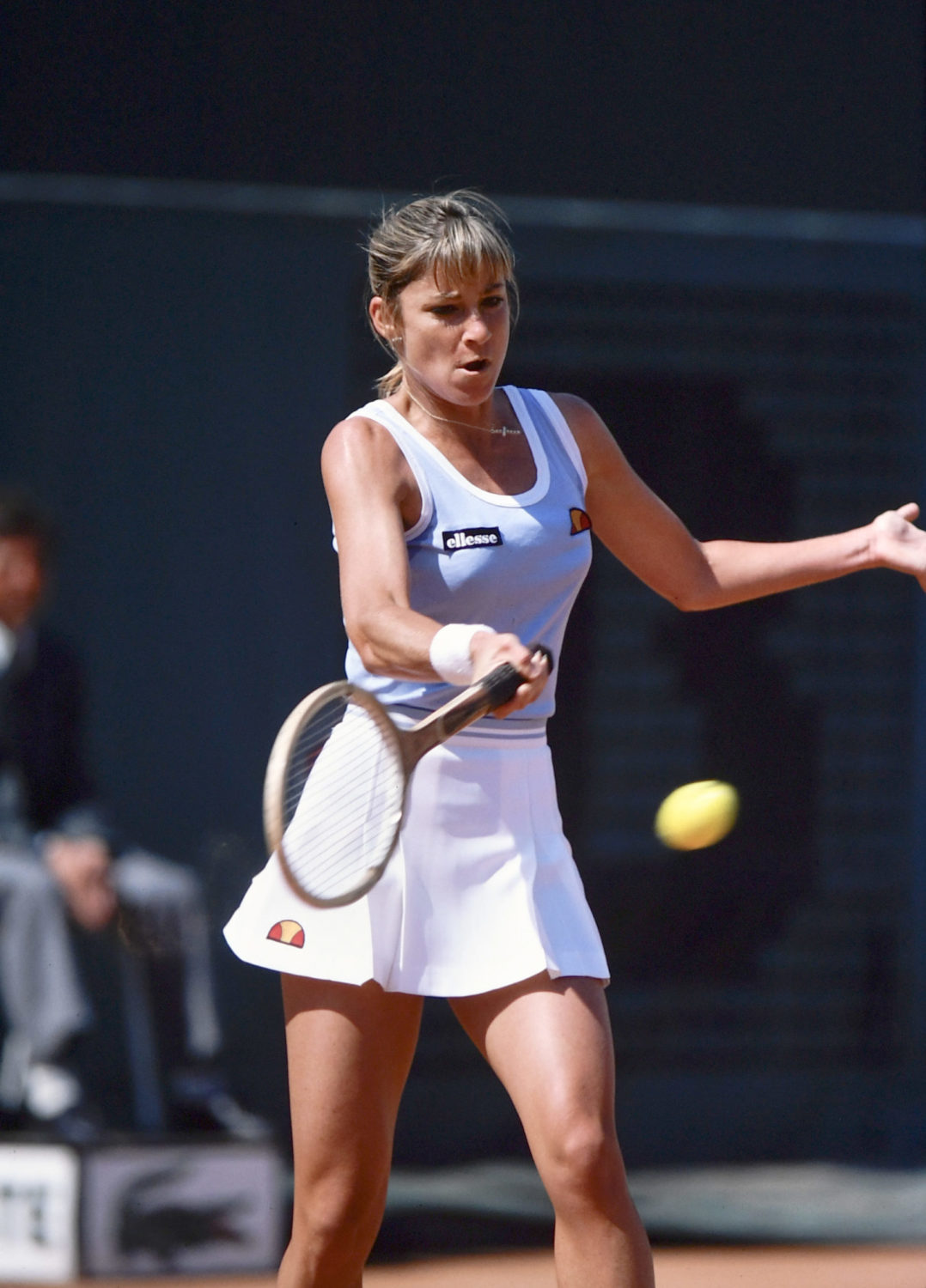
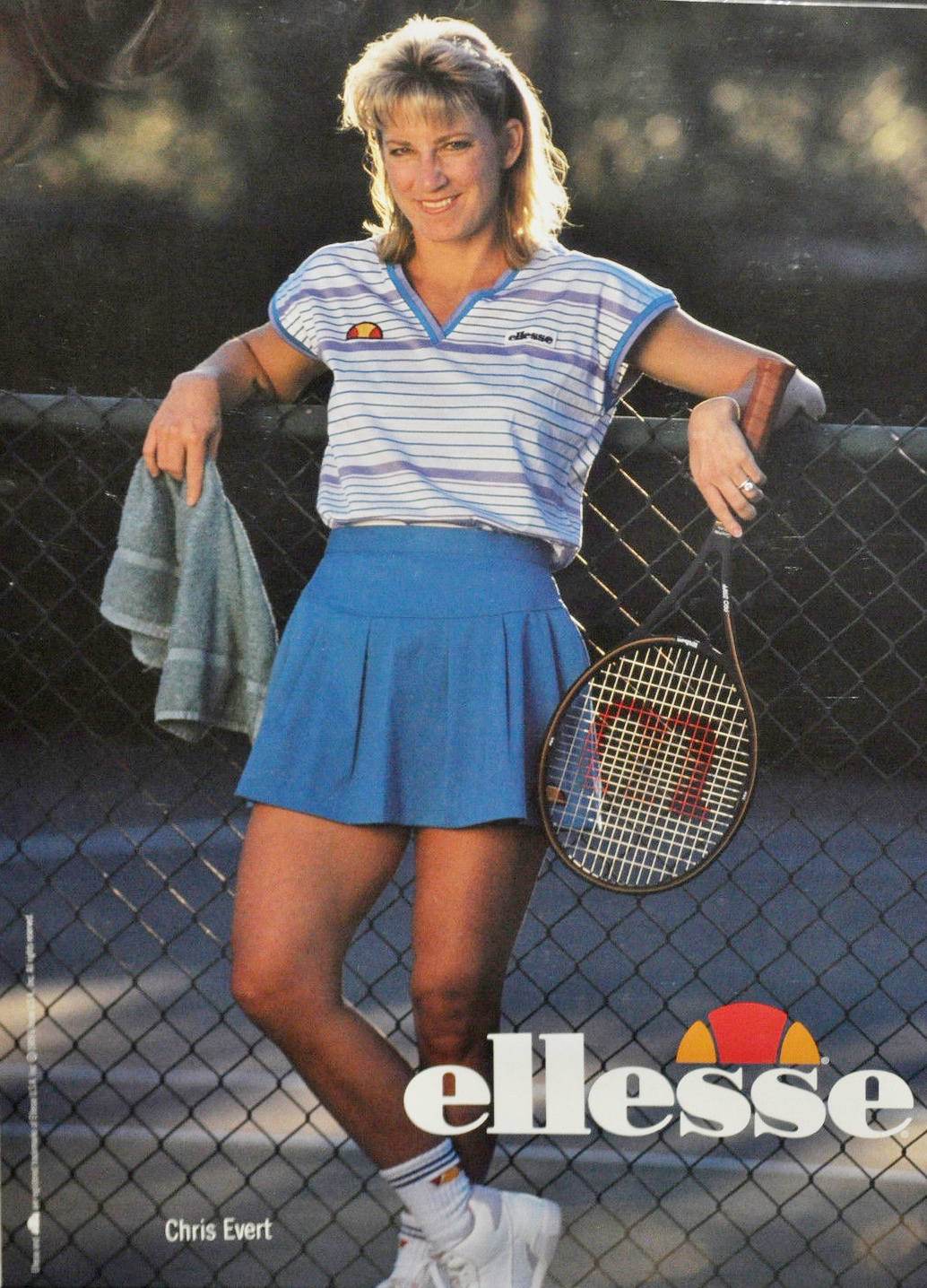
A long-term success story, until the champion hung up her rackets, Evert and ellesse were an obvious match. The union is so successful, permeates the retinas so strongly, that you almost forget that the American had not conducted her entire career dressed in ellesse. Evert’s iconic link to the brand also contrasts with the stylistic journey of Navratilova. The American’s other big rival, also an 18-time major singles champion when all is said and done, perpetually seeks her stylistic match, moves from partner to partner, but despite her immense career, will never be an icon of one house.
ellesse came into being 22 years before the 1981 Wimbledon final, born from the imagination of Leonardo Servadio. This mountain enthusiast followed in the footsteps of his parents, who were tailors and shop owners in Perugia. The young Leonardo took it into his head to create ski outfits, especially trousers that combined both comfort and style. In this Italy, which is recovering from the traumas of the Second World War and the Mussolini years, there is once again a freedom and a need for creativity. Servadio, like others, is part of this movement. Aided by local entrepreneurs, he succeeded in 1959 in launching his own house: LS, his initials, soon become ellesse, with the first L and the first S in bold.
The creations of Servadio, which were ins-pired by the work trousers worn by artisans, gradually hit their marks, and gained popularity among sports enthusiasts and fashionistas alike. Ten years later, the Jet model appeared for the first time on the slopes of the Aosta Valley and the Dolomites. The trousers lengthen the leg and flatter the figure. It’s a masterstroke. The red version – colour which would become one of the brand’s signatures – is a must-have for skiers in the early 1970s. Servadio’s approach is based on common sense thinking: “We are much better if we feel good in our clothes,” he explained.
In 1969, ellesse sponsored the Italian alpine ski team which featured Gustav Thöni, the Giant Slalom World Cup champion. A growing international reputation did not prevent Servadio from continuing to innovate: his lace-up trousers, with knee pads and elastic waist, offered in 1971, helped establish ellesse even more in the marketplace.
Why, therefore, not open up to other disciplines? In a country with a strong reputation for textile tradition, the fashion industry has become a major player in the economy. There is an opportunity to make a splash in the sports sector, which has notably been dominated by Fila (founded in 1911), Lotto (1939), Diadora (1948) and even the much younger Tacchini (1966). Servadio, who like the swiftest tennis players, possesses the gift of perfect timing, joined the battle, and dipped his toes into tennis in 1974. The first player equipped by the Perugia brand was the young Corrado Barazzutti. A perfect choice! Winner of Roland-Garros juniors and the Orange Bowl three years earlier, Barazzutti’s game is an intoxicating cocktail of talent and character. A zesty Italian player is Barazzutti, whose artful game is wonderfully expressed on the picturesque red clay. His first big splash on the senior circuit was a victory over Ilie Nastase, then World No.1, in the quarter-finals of the prestigious Monte-Carlo tournament. Barazzutti delivers the message to the chic country clubs of the world and the people watching. The Italian gains notice and ellesse with it. Barazzutti would rise to seventh in the world, with semi-final appearances at the US Open (1977) and Roland-Garros (1978) as well as five ATP titles.
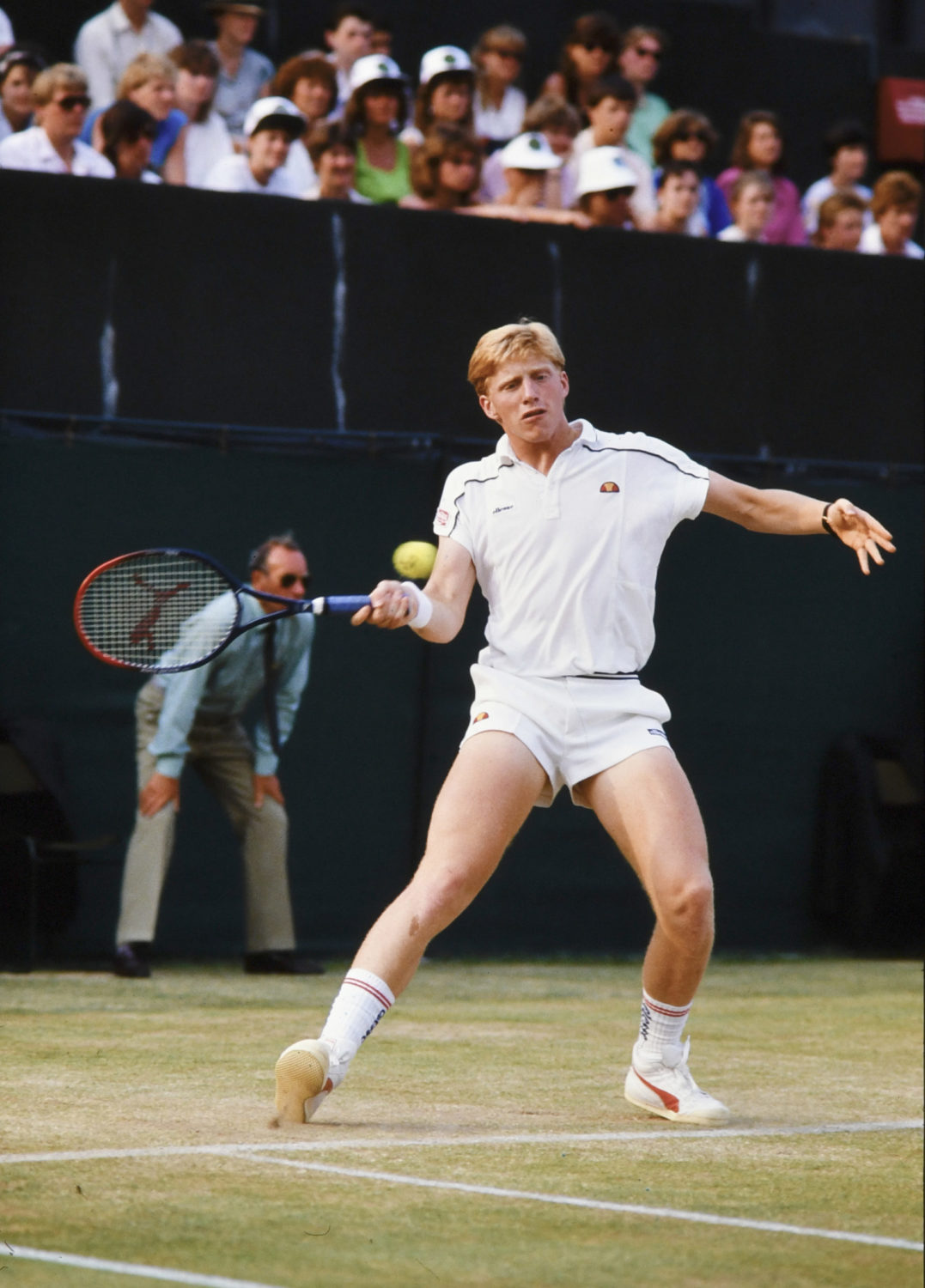
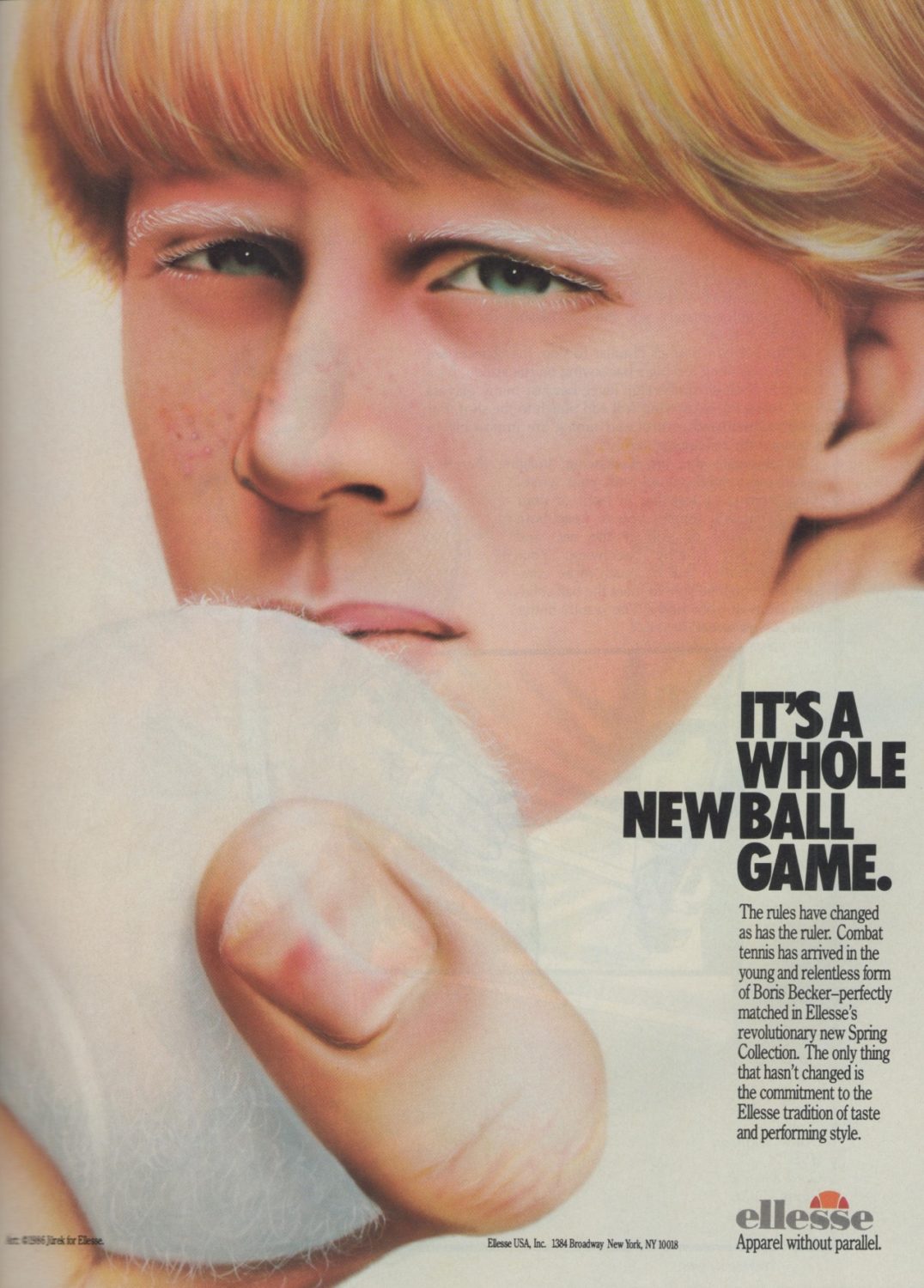
For Servadio, it is also important from a marketing perspective to underline this diversification: There is no great brand without a strong visual footprint. Thus, the logo of ellesse was born in 1975. A landmark creation, marrying the two emblematic sports of the firm: two skis, red – naturally – surrounding a half-dome yellow tennis ball. Fortunes improved further in 1980. At Roland-Garros, Virginia Ruzici, tournament winner two years earlier, is dressed in vibrant, eye-popping red skirt and playful multi-striped blouse in Paris, as she makes her way to the final. Vintage ellesse.
Trailing the arrival of the elegant Romanian champion at ellesse, we find a bemusing character by the name Ion Tiriac. The former player, in the process of reinventing himself as a coach, promoter and entrepreneur, would take charge of the career of Guillermo Vilas at the end of the 1975 season. Approached by then fledgling American firm Nike, which wishes to procure the services of the charismatic Argentinian, Tiriac balks and chooses the more fashionable frontier: ellesse.
Vilas, the original King of Clay, before Nadal came around and redefined the term, will remain decked out in ellesse until the end of his career. And he will do it in style. The Argentine southpaw is a swashbuckling figure. He is vibrant, masculine, moody, and sometimes irreverent. He is a mystery to many, but not in his desire to achieve great victories – at his core Vilas is combative and hungry for the biggest prizes, a lion-hearted generational leader who will take tennis to a new dimension. In turn, the ellesse style sticks to his skin and builds his image just as it helps augment the brand.
Footloose, free, and more colourful than the creations of its competitors, ellesse has never been shy about its desire to break stereotypes, and thus the legend has grown. With the brand on his back, Vilas won 16 titles and contested 20 finals, including his swan song at Roland-Garros in 1982. Vilas lifted his 62nd and final trophy on the clay courts of Kitzbühel in July 1983 in a 100 percent ellesse final against Henri Leconte. A splendid showpiece and a thrilling transfer of power: the young Frenchman had joined ellesse the previous year and would proudly boast the colours for the next three seasons. It was in ellesse that Leconte scored his maiden title, in Stockholm, in 1982.
Italy’s juggernaut was not finished causing sparks. The new kid on the block is named Boris Becker, and he’s impossible to ignore. He is a brash, pugilistic German who uproots everything in his path and will revolutionise the sport with his mind-bending serve and head-first dives on the Wimbledon grass. In 1985, at age 17, Becker stunned the tennis world by becoming the youngest ever men’s singles champion at the All England Club. Frozen in time are iconic photos of the wunderkind, parallel to the ground, the ellesse logo adorning his snug-fitting polo as he sails through the air. The day before Becker’s maiden triumph, Chris Evert played the final against Navratilova at Wimbledon. Once again, ellesse is at the peak of its powers. Becker, in the same kit, will repeat his feat the next year. Along with the emergence of “Boom Boom” Becker, Evert’s chic and magnetism continue to push the envelope and take her on-court style into the mind of the collective subconscious. Under the banner of ellesse, the American added seven Grand Slam trophies to her record, bringing her total to 18. Evert’s number of titles on the WTA circuit is beyond comprehension: 154. She won the last one in October 1988, in New Orleans, a few months before her retirement.
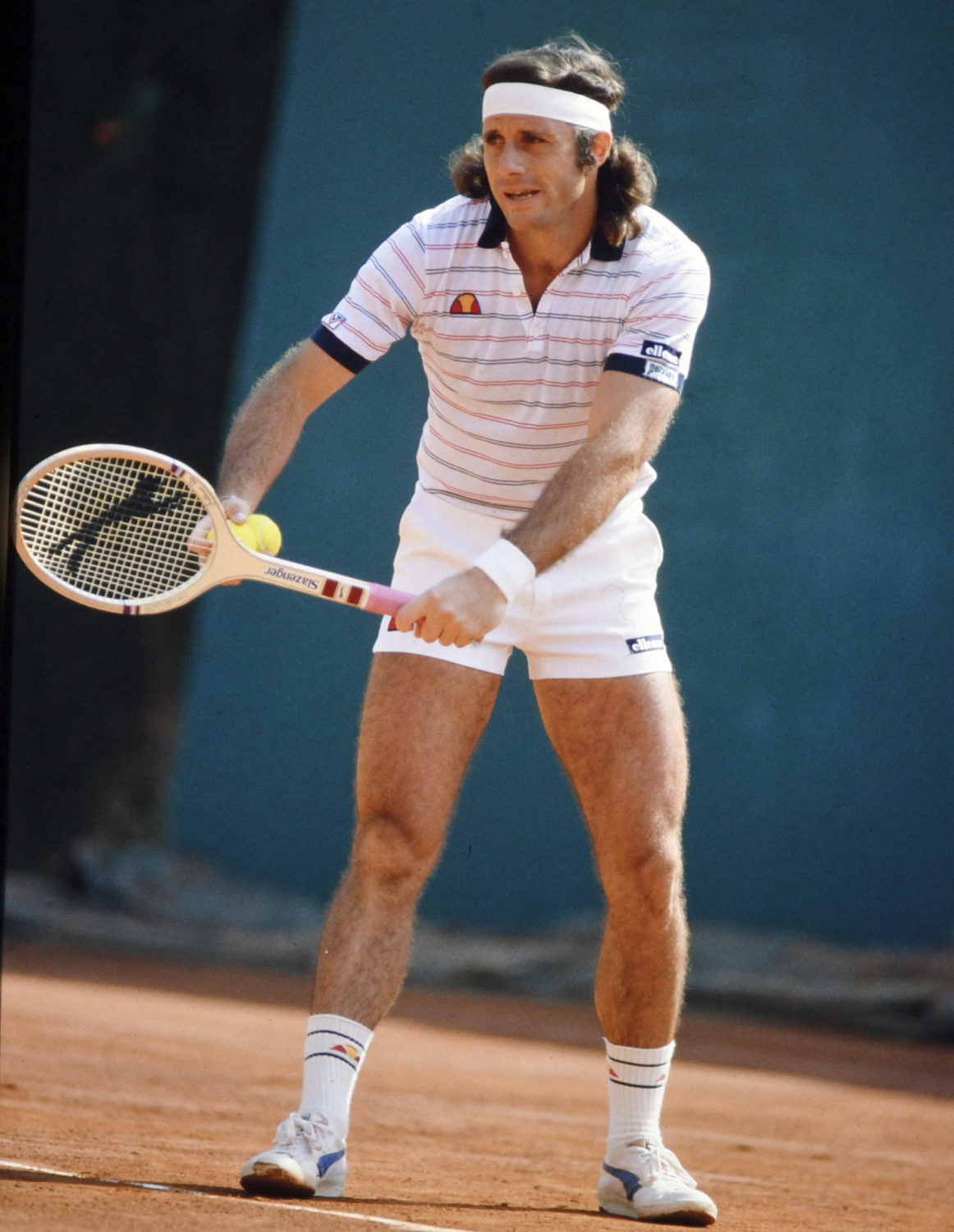
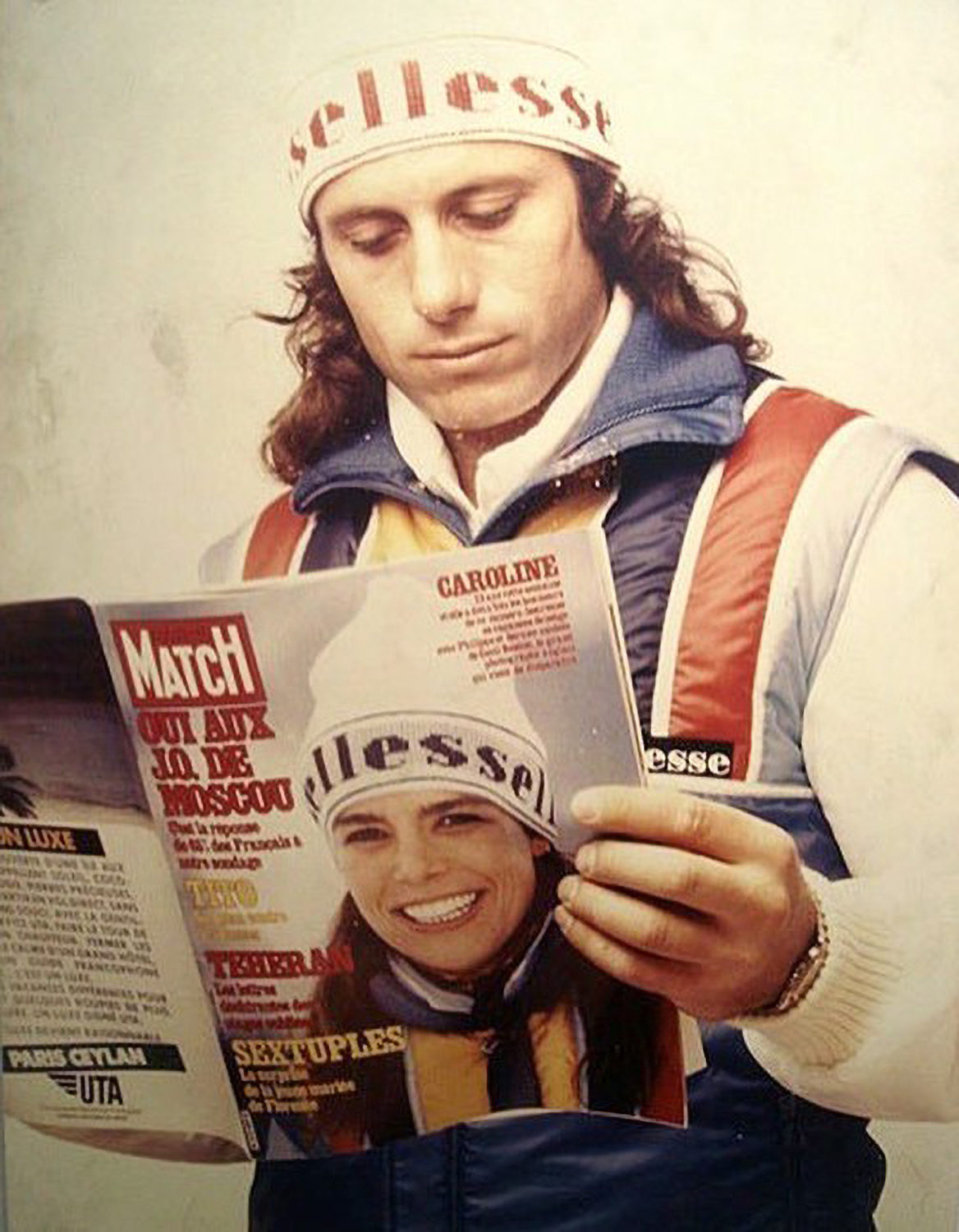
Could a brand dream of a better standard bearer? It was during the Vilas and Evert era that ellesse had its most dynamic period. In 1983, the turnover reached a record 139 billion lire (about 71 million Euros), also driven by the success of Italy at the 1982 Football World Cup, in ellesse shorts and jerseys.
After a few transitional years, ellesse re- turned to its perch as style maven in the 1990s. On the tennis side, the colours sing as new talent lends fresh character to contemporary styles. Anna Kournikova, Arantxa Sanchez, Tommy Haas and Feliciano Lopez join the family. Pat Cash, winner in 1982 of the junior titles at the US Open and Wimbledon in ellesse, would return in 2014. The Puerto Rican Monica Puig made history as well, her Cinderella story captures the imagination of the sporting world when she wins Gold at the Rio Olympics in 2016, thus becoming the first Olympic champion of her country, all sports and all sexes combined. Pica Power!
In recent years, British No.1 Johanna Konta has lent her aesthetic to the brand. A proud, resilient independent thinker, Konta is the perfect embodiment of ellesse in the modern era: Sure of herself, quick to the punch, and always elegant. Joining Konta from the Brit pack are Alfie Hewett, World No.1 in wheelchair tennis, and former NCAA champion Paul Jubb.
Just as ellesse founder Leonardo Servadio backed young talent with Mandlíková in 1980, the modern day ellesse is immersed in making tennis more accessible and seeking out the talent of tomorrow. From signing the first British NCAA men’s singles champion Paul Jubb in 2020 when he turned pro, to creating a PATTA partnership in order to regenerate urban tennis facilities in London and beyond, the brand is committed to opening up the sport to a wider, more diverse audience.
The future is bright, and the tradition is time-honoured. The legacy lives on in all these heroes, past and present, as they wear with pride this testament to a most sacred heritage.
